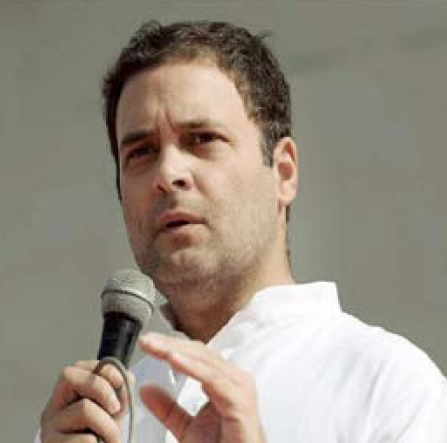By Dr. Anirban Ganguly
When Narendra Modi addressed workers of the BJP on the day Gujarat and Himachal Pradesh was won, he presciently cautioned them that in the days to come, serious efforts would be made by some sections to spread the poison of casteism and of strife. “It has taken a lifetime”, Modi noted, “for those like us, to cleanse and free the state of Gujarat from the poison of casteism. We fought this vicious cycle for three decades before ridding the state of it”, he reminded those gathered.
he recent Bhima-Koregaon incident clearly indicates that there is indeed a concerted and renewed effort at trying to divide Indian society and tear open its healing faultlines. The Bhima-Koregaon event has been celebrated over many years, why is it that this year, it was chosen to be hyped up, why were nefarious elements like Umar Khalid, a leading voice of the “breaking India” brigade in whose support Rahul Gandhi had leapt across into the Jawaharlal Nehru University, invited, why was Jignesh Mevani invited to give provocative speeches inciting violence, spewing venom, from where did hoodlums with saffron flags suddenly descend and disrupt the gathering, how did Rahul Gandhi, within minutes of the incident put out a tweet accusing the RSS and BJP of being anti-Dalit and fascist?
Why saffron flags, was it to reinforce the false stereotype of “saffron terror” and “saffron intolerance”, a false stereotype that has been very carefully crafted and nurtured by a section of the “organised elite” with sympathies and active support for naxalites and India breakers? The entire script, the entire act seemed very well choreographed with the objective of disrupting life in a non-Congress ruled state and to target the RSS and the BJP and adding a pint of saffron in the act was part of that larger design to deflect the blame to other quarters while the actual schemers would pass off as victims.
The Congress’s Rahul Gandhi era has indeed come, and in that era, the party shall increasingly outsource its politics to extraneous elements, elements through which it will seek to disrupt societal balance, exacerbate faultlines, widen fissures and give the image of an India under siege. This time round, Rahul’s Congress has outsourced its politics to forces that are inimical to India and have at their heart the twin objectives of defeating Modi and of destabilizing India. These two aspects are obviously linked; by weakening and eventually defeating Modi, these forces hope to weaken the fabric of India.
Thus the JNU “breaking India” brigade, a section of communists, lapsed Marxists, Naxal sympathizers were active in support of Mevani during the Gujarat elections, and in his victory they perceive a new mascot who can further their agenda of sharpening faultlines in India.
On the other defeat in Gujarat, has made the Congress desperate for 2019, Rahul therefore plans to align with these groups that have been at the forefront of subterfuge and sabotage. With half-roots in a land that had a past political culture of fascism, Rahul is quick to identify these, align with them and then push forward his agenda. This knack for fascist action, this propensity to see and read every situation from the fascist lens, is what Rahul has specialized in.
His desperation to see Modi unseated goads Rahul to support those elements in the academia and intelligentsia who have been repeatedly calling for India’s disintegration. He is thus aligning the with Popular Front of India (PFI) which has till date butchered more than 20 BJP workers in Karnataka and has worked to radicalize the western coast of the state, Rahul remains silent because he needs the support of such groups in order to try and unseat Modi or to hold on to his state. In Tripura, while the goons patronized by the communist regime go on a killing spree of BJP workers, most of whom belong to the Dalit sections of society; Rahul remains silent for he needs the communists as allies in his larger goal of unseating Modi.
The largest number of Dalit Members of Parliament belong to the BJP, it is Modi’s governance vision which has seen initiatives undertaken that have a direct impact on uplifting the quality of life of the marginalized and oppressed, it is the BJP which showed the determination to empower a Dalit, from the grassroots, with a humble background to adorn the office of the President of India.
In his action of Dalit of empowerment, in his determination to achieve a larger pan-Indian unity beyond the barriers of caste and creed, Modi has displayed an unequivocal and steely steadfastness. It is a steadfastness that gives strength to his vision of a new India while unsettling those whose politics thrive on division, disunity and debilitation, it is they who are trying to light bush fires of conflict and clash.
(The views expressed are the author's own and do not necessarily reflect the position of the organisation)

